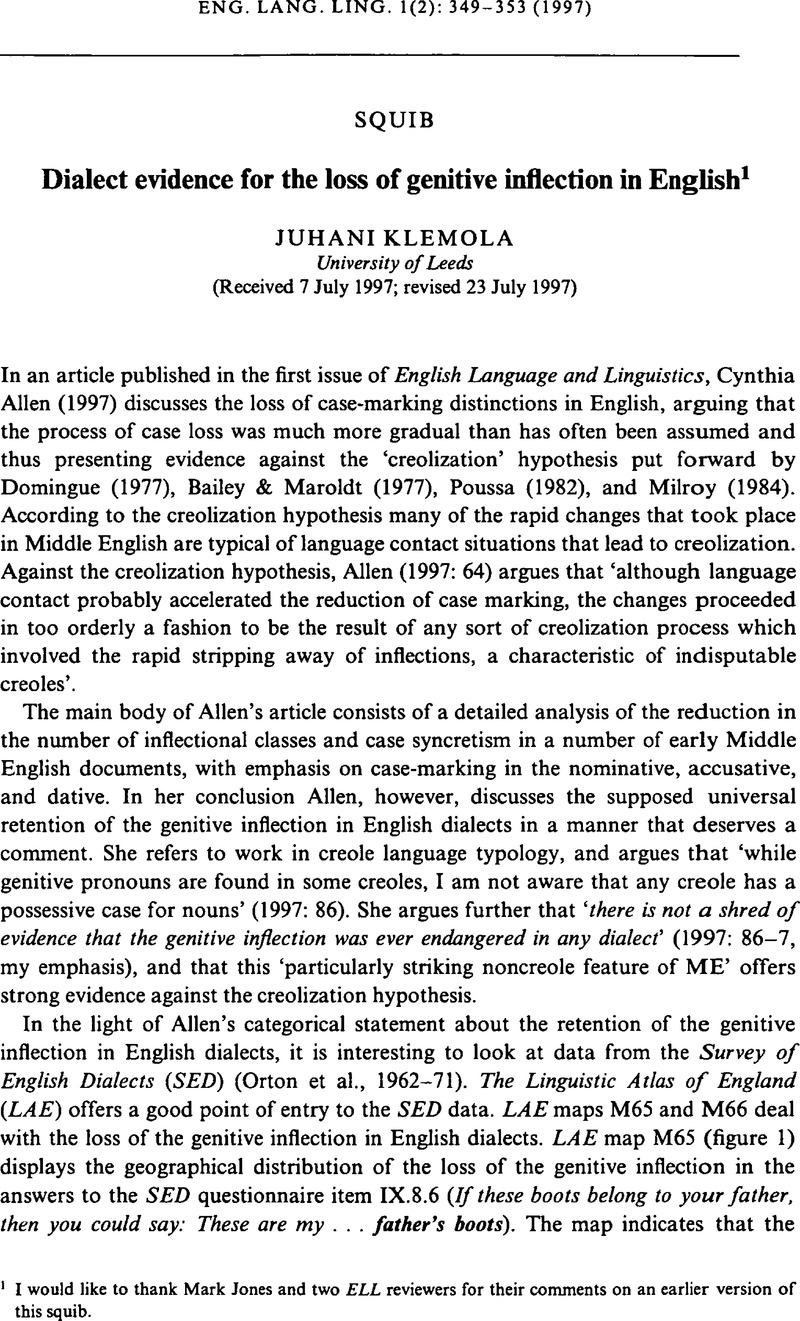Crossref Citations
This article has been cited by the following publications. This list is generated based on data provided by Crossref.
Allen, Cynthia L.
1998.
Genitives and the creolization question.
English Language and Linguistics,
Vol. 2,
Issue. 1,
p.
129.
2000.
Generative Theory and Corpus Studies.
p.
183.
ROSENBACH, ANETTE
2014.
English genitive variation – the state of the art.
English Language and Linguistics,
Vol. 18,
Issue. 2,
p.
215.
Walkden, George
Klemola, Juhani
and
Rainsford, Thomas
2023.
Medieval English in a Multilingual Context.
p.
239.



